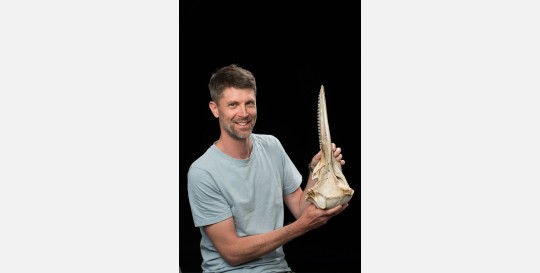Study of the evolution of the postcranial skeleton and locomotion of pelagic cetaceans
Completed
01.10.19 → 30.09.23

Cetaceans are the largest group of mammals that transitioned from land to sea. Their long evolutionary history produced a wide variety of whales, dolphins, and porpoises, characterized by a number of different types of predation and ecological niches. Nevertheless, the evolution of the postcranial skeleton and its link to locomotion has only been partly addressed in fully aquatic cetaceans (Pelagiceti).

Furthermore, many new extinct cetaceans have been recently described, and these new species illustrate new steps within the evolutionary history of the group. During this PhD it is projected to test for the correlation between the postcranial morphology (flipper bones and vertebrae), the locomotion style, and the ecological niches of extant cetaceans. In order to do this, a selection of bones of extant species will be scanned (via surface scanning), and the data obtained from the 3D models will then be analyzed and confronted to the ecological characteristics of these species (via ACP, ANOVA, and MANOVA). Afterwards, fossil specimens will be integrated in these analyses. The functional/ecological interpretations obtained for extinct species will allow to identify, within a phylogenetic framework, some key steps of the evolution of locomotion within Pelagiceti, and to confront those to the emergence of new predation techniques and habitats.
Funding
FNRS - FRIA
Internal member
Olivier Lambert
Other members
- Guillaume Duboys de Lavigerie (ULiège/RBINS)
- Valentin Fischer (ULiège)
Partners en sponsors



